Addition of hydrogen to alkene in presence of nickel catalyst is
reduction
oxidation
addition and elimination
substitution
The correct Answer is:C
To solve the question regarding the addition of hydrogen to an alkene in the presence of a nickel catalyst, we can break down the process step by step.
1. Understanding the Reaction:
- The reaction involves the addition of hydrogen (H₂) to an alkene (which is an unsaturated hydrocarbon) in the presence of a nickel catalyst.
Hint: Remember that alkenes contain double bonds, which are characteristic of unsaturated hydrocarbons.
2. Role of the Catalyst:
- Nickel acts as a catalyst in this reaction. Catalysts are substances that speed up a chemical reaction without being consumed in the process.
Hint: Catalysts lower the activation energy of a reaction, making it easier for the reaction to occur.
3. Conditions of the Reaction:
- The reaction typically occurs at elevated temperatures, around 200 degrees Celsius, to facilitate the addition of hydrogen.
Hint: Temperature can significantly affect the rate of reaction, especially in catalytic processes.
4. Mechanism of the Reaction:
- When hydrogen is added to the alkene, the double bond in the alkene is broken. The hydrogen atoms then bond with the carbon atoms that were previously involved in the double bond.
Hint: Visualize the breaking of the double bond and the formation of new single bonds with hydrogen.
5. Formation of the Product:
- The result of this reaction is a saturated hydrocarbon, meaning that all carbon-carbon bonds are single bonds, and there are no double or triple bonds remaining.
Hint: Saturated hydrocarbons are typically more stable than their unsaturated counterparts.
6. Type of Reaction:
- This process can be classified as an addition reaction because hydrogen is being added to the alkene. It can also be viewed as a reduction reaction since the addition of hydrogen reduces the degree of unsaturation.
Hint: In organic chemistry, addition reactions often involve the conversion of unsaturated compounds to saturated ones.
7. Conclusion:
- Therefore, the addition of hydrogen to an alkene in the presence of a nickel catalyst is primarily classified as an addition reaction.
Hint: Look for keywords in the question that indicate the type of reaction, such as "addition" or "reduction".
Final Answer:
The addition of hydrogen to an alkene in the presence of a nickel catalyst is called an addition reaction.
- The reaction involves the addition of hydrogen (H₂) to an alkene (which is an unsaturated hydrocarbon) in the presence of a nickel catalyst.
- Nickel acts as a catalyst in this reaction. Catalysts are substances that speed up a chemical reaction without being consumed in the process.
- The reaction typically occurs at elevated temperatures, around 200 degrees Celsius, to facilitate the addition of hydrogen.
- When hydrogen is added to the alkene, the double bond in the alkene is broken. The hydrogen atoms then bond with the carbon atoms that were previously involved in the double bond.
- The result of this reaction is a saturated hydrocarbon, meaning that all carbon-carbon bonds are single bonds, and there are no double or triple bonds remaining.
- This process can be classified as an addition reaction because hydrogen is being added to the alkene. It can also be viewed as a reduction reaction since the addition of hydrogen reduces the degree of unsaturation.
- Therefore, the addition of hydrogen to an alkene in the presence of a nickel catalyst is primarily classified as an addition reaction.
The addition of hydrogen to an alkene in the presence of a nickel catalyst is called an addition reaction.
Topper's Solved these Questions
Similar Questions
The hydrogenation of vegetable oil in the presence of nickel catalyst forms vanaspati ghee.
View SolutionHydrogenation of alkenes and alkynes takes place in presence of certain catalysts. In Sabatier Senderen's reaction, the addition of hydrogen takes place I presence of Raney nickel catalyst. Platininm and palladium can also be used as catalyst and used in finley divided state. Experimentally, it is observed that less crowded alkenes adsorb H2 with faster rate. Controlled hydrogenation of alkyne H2 with faster rate. Controlled hydrognetation of alkyne in presence of Lindlar's catalyst yields cis product i.e., 'cis' alkene. Thus, in presence of Lindlar's catalyst 'syn' addition takes place. The relative rate of hydrogenation follows the order:

Non-terminal alkynes are reduced in presence of Na or Li metal dissolved in liquid ammonia. In this reaction, anti-addition of hydrogen results into the trans-product.
Powdered nickel is more effective than grannular nickel because:
View Solution
Knowledge Check
Hydrogenation of alkenes and alkynes takes place in presence of certain catalysts. In Sabatier Senderen's reaction, the addition of hydrogen takes place I presence of Raney nickel catalyst. Platininm and palladium can also be used as catalyst and used in finley divided state. Experimentally, it is observed that less crowded alkenes adsorb H2 with faster rate. Controlled hydrogenation of alkyne H2 with faster rate. Controlled hydrogenation of alkyne in presence of Lindlar's catalyst yields cis product i.e., 'cis' alkene. Thus, in presence of Lindlar's catalyst 'syn' addition takes place. The relative rate of hydrogenation follows the order:

Non-terminal alkynes are reduced in presence of Na or Li metal dissolved in liquid ammonia. In this reaction, anti-addition of hydrogen results into the trans-product.
Answer the following questions:
The relative rate of catalytic hydrogenation of following alkenes is:
 AIIgtIIIgtIVgtIBIgtIVgtIIIgtIICIIIgtIVgtIgtIIDIIgtIVgtIgtIII
AIIgtIIIgtIVgtIBIgtIVgtIIIgtIICIIIgtIVgtIgtIIDIIgtIVgtIgtIIIHydrogenation of alkenes and alkynes takes place in presence of certain catalysts. In sabatier-Senderen's reaction, the addition of hydrongen taken place in presence of nickel catalyst. Controlled hydrogenation of alkyne in presence of Lindlar's catalyst gives cis-alkene. Non terminal alkynes are reduced by Na or Li metal dissolved in liquid NH3. In this reaction trans alkenes are formed.
Q. The product of the following reaction is
 A
A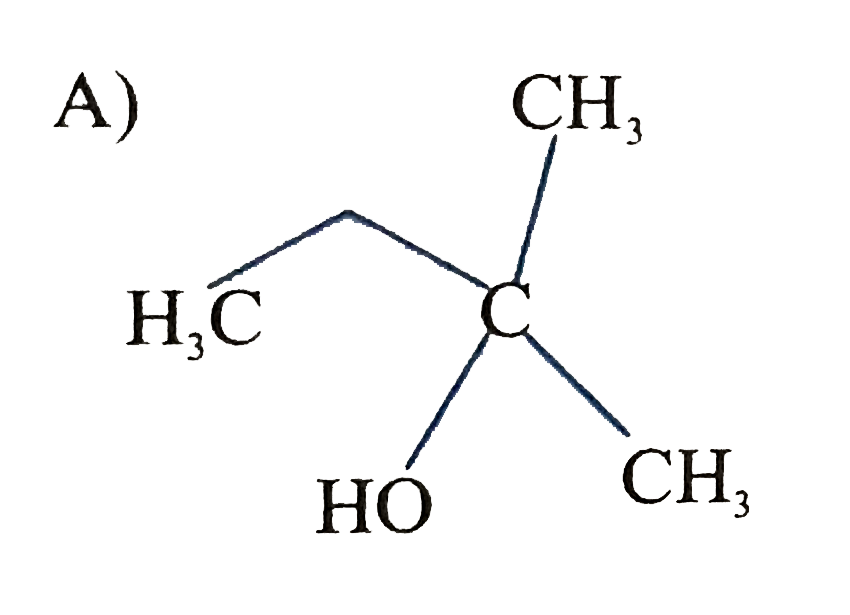 B
B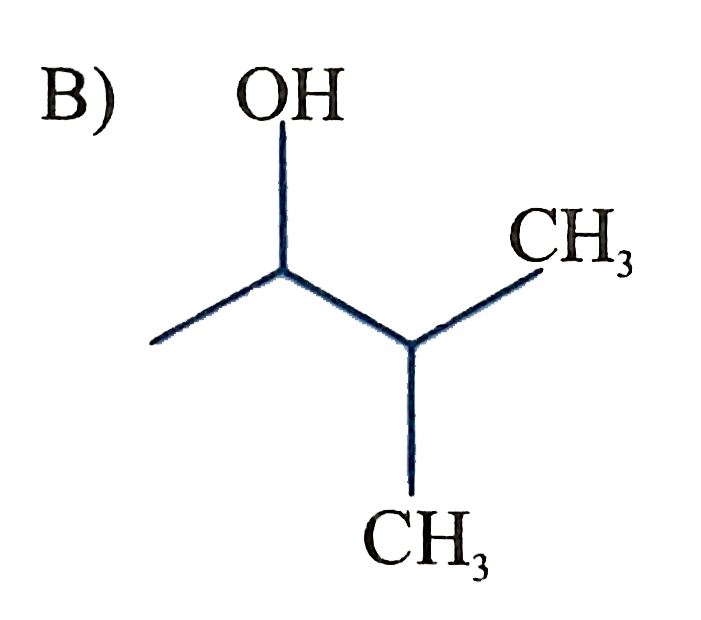 C
C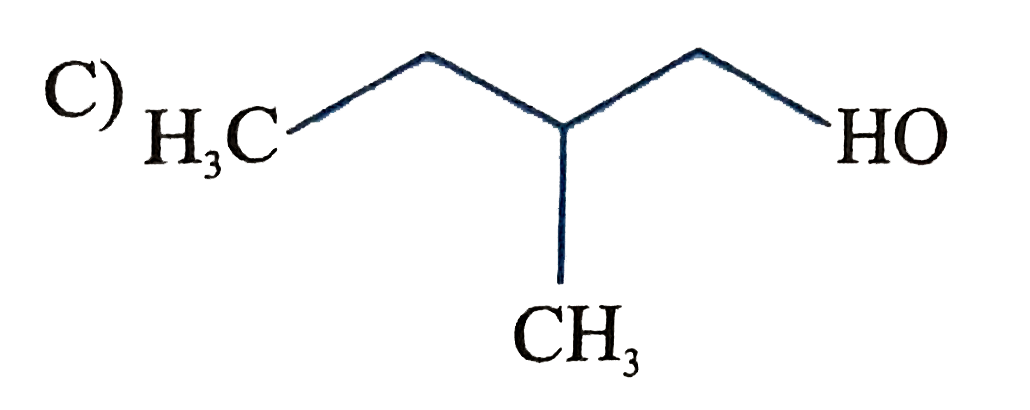 D
D
Hydrogenation of alkenes and alkynes takes place in presence of certain catalysts. In sabatier-Senderen's reaction, the addition of hydrongen taken place in presence of nickel catalyst. Controlled hydrogenation of alkyne in presence of Lindlar's catalyst gives cis-alkene. Non terminal alkynes are reduced by Na or Li metal dissolved in liquid NH3. In this reaction trans alkenes are formed.
Q. In which of the following the reaction is most exothermicA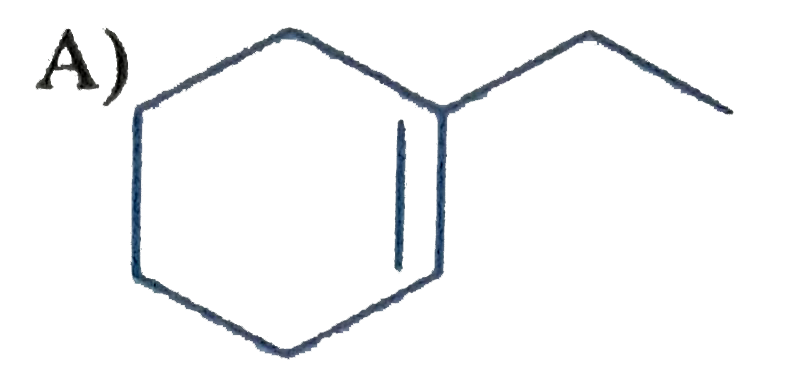 B
B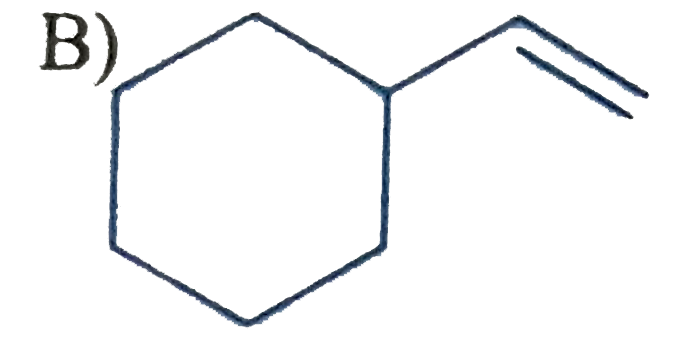 C
C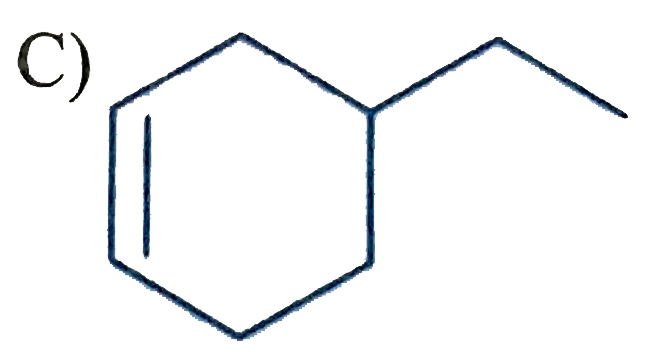 D
D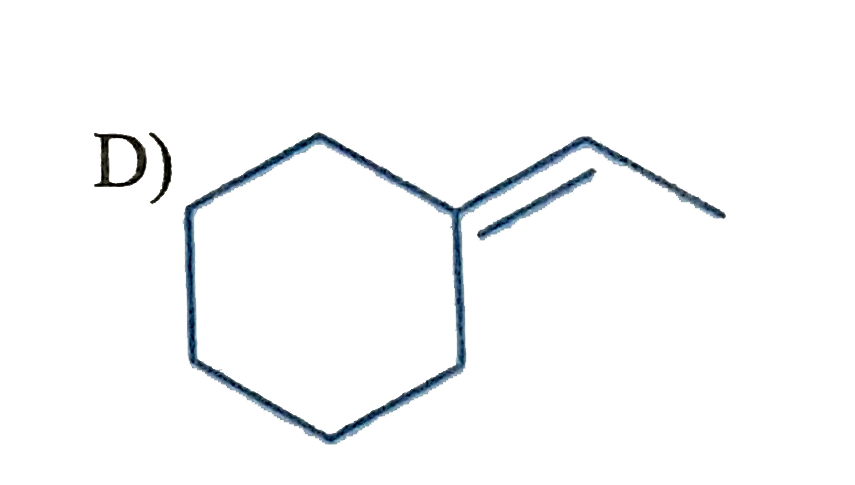
Hydrogenation of alkenes and alkynes takes place in presence of certain catalysts. In Sabatier Senderen's reaction, the addition of hydrogen takes place I presence of Raney nickel catalyst. Platininm and palladium can also be used as catalyst and used in finley divided state. Experimentally, it is observed that less crowded alkenes adsorb H2 with faster rate. Controlled hydrogenation of alkyne H2 with faster rate. Controlled hydrogenation of alkyne in presence of Lindlar's catalyst yields cis product i.e., 'cis' alkene. Thus, in presence of Lindlar's catalyst 'syn' addition takes place. The relative rate of hydrogenation follows the order:

Non-terminal alkynes are reduced in presence of Na or Li metal dissolved in liquid ammonia. In this reaction, anti-addition of hydrogen results into the trans-product.
Answer the following questions:
The relative rate of catalytic hydrogenation of following alkenes is:

View SolutionHydrogenation of alkenes and alkynes takes place in presence of certain catalysts. In Sabatier Senderen's reaction, the addition of hydrogen takes place I presence of Raney nickel catalyst. Platininm and palladium can also be used as catalyst and used in finley divided state. Experimentally, it is observed that less crowded alkenes adsorb H2 with faster rate. Controlled hydrogenation of alkyne H2 with faster rate. Controlled hydrogenation of alkyne in presence of Lindlar's catalyst yields cis product i.e., 'cis' alkene. Thus, in presence of Lindlar's catalyst 'syn' addition takes place. The relative rate of hydrogenation follows the order:

Non-terminal alkynes are reduced in presence of Na or Li metal dissolved in liquid ammonia. In this reaction, anti-addition of hydrogen results into the trans-product.
In which of the following cases, the reaction is most exothermic?
View SolutionHydrogenation of alkenes and alkynes takes place in presence of certain catalysts. In Sabatier Senderen's reaction, the addition of hydrogen takes place I presence of Raney nickel catalyst. Platininm and palladium can also be used as catalyst and used in finley divided state. Experimentally, it is observed that less crowded alkenes adsorb H2 with faster rate. Controlled hydrogenation of alkyne H2 with faster rate. Controlled hydrogenation of alkyne in presence of Lindlar's catalyst yields cis product i.e., 'cis' alkene. Thus, in presence of Lindlar's catalyst 'syn' addition takes place. The relative rate of hydrogenation follows the order:

Non-terminal alkynes are reduced in presence of Na or Li metal dissolved in liquid ammonia. In this reaction, anti-addition of hydrogen results into the trans-product.
H3C−C≡C−CH3+H2Pd/CaCO3−−−−−−−−−→Boiling Quinoline(A)
The product (A) will be:
View SolutionHydrogenation of alkenes and alkynes takes place in presence of certain catalysts. In Sabatier Senderen's reaction, the addition of hydrogen takes place I presence of Raney nickel catalyst. Platininm and palladium can also be used as catalyst and used in finley divided state. Experimentally, it is observed that less crowded alkenes adsorb H2 with faster rate. Controlled hydrogenation of alkyne H2 with faster rate. Controlled hydrogenationof alkyne in presence of Lindlar's catalyst yields cis product i.e., 'cis' alkene. Thus, in presence of Lindlar's catalyst 'syn' addition takes place. The relative rate of hydrogenation follows the order:

Non-terminal alkynes are reduced in presence of Na or Li metal dissolved in liquid ammonia. In this reaction, anti-addition of hydrogen results into the trans-product.
The product of the following reaction is:

View SolutionThe presence of a catalyst
View Solution
